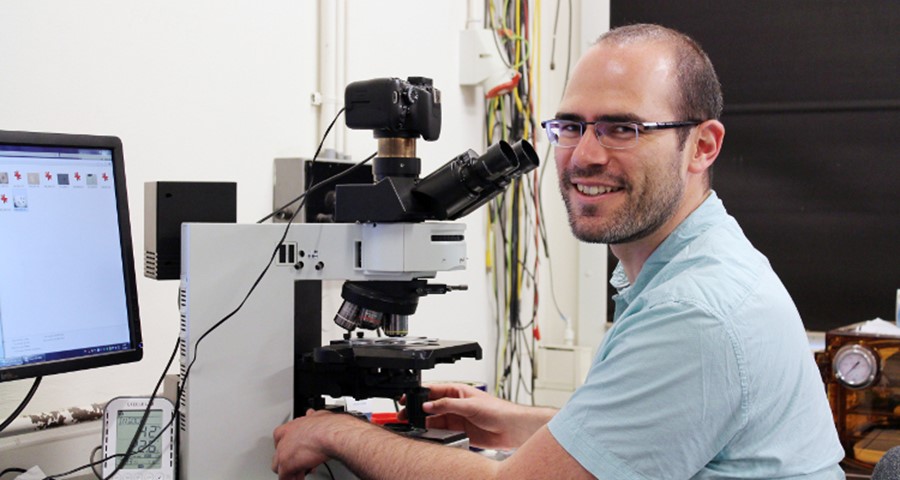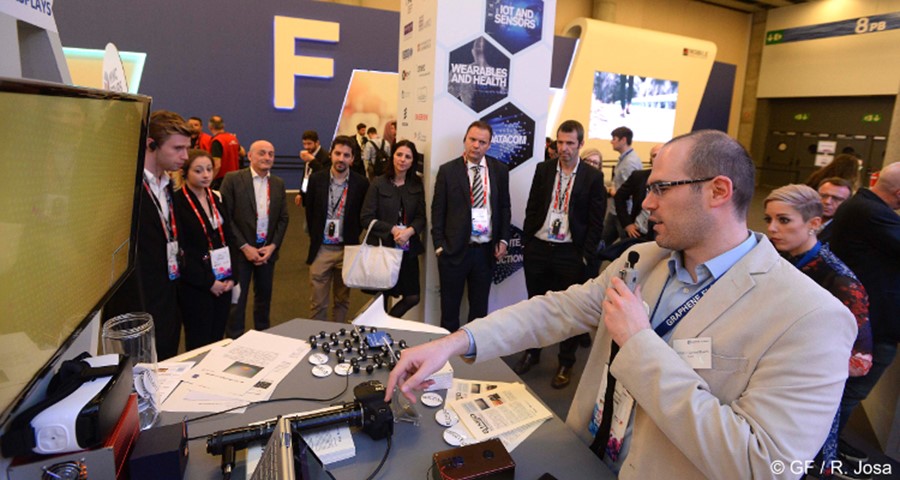Spotlight: Santiago Cartamil-Bueno
The Graphene Flagship's Spotlight series tells the stories behind the research. PhD student Santiago J. Cartamil-Bueno is involved in various graphene-related projects. He tells u about his work and his passion for science.
Santiago J. Cartamil-Bueno is a PhD student working with Herre van der Zant in Delft Technical University, the Netherlands. Currently writing up his PhD thesis, his main work has been on using graphene in sensitive pressure sensors. Alongside this, he has presented graphene-based prototype screens with pixels too small to see, and is preparing for an exciting experiment on using graphene in light sails for spacecraft propulsion.
What is the theme of your PhD research?
My research is focused on exploiting the mechanical properties and impermeable properties of graphene to make highly accurate hermetic pressure sensors, by suspending graphene membranes over cavities in a substrate. I collaborate with Graphenea to make the devices.
I noticed that the suspended graphene changed colour under different pressures because the graphene on top moved in and out of the cavity. We can see them – as they change over time and with pressure. Using this, I developed a technique to characterise these devices in an optical microscope. We have continued this research, and now we can make these measurements on hundreds of devices in parallel, to get statistics on the devices – how porous they are, but also correlated with size. We are showing the way to standardise this type of hermetic devices.
You presented some of this work at Mobile World Congress 2017. How did that go?
After we published the results on the colour changes, I heard about the Graphene Flagship going to Mobile World Congress. I though, technically, what we have are pixels – not normal pixels, but it seemed worth investigating. I found out that mechanical pixels already existed, but now we can do it with graphene – a new application.
We had to use a lot of creativity to show these ultra-small pixels, we needed to use a microscope to show people the colour change. I'm very happy with how it went. We are now looking for a patent on this result, and I'm also thinking about making a start-up company based on these ideas.
You travelled to Boston using a Graphene Flagship Mobility Grant. What did you do there?
We were trying to determine the adhesion energy of graphene on our substrates. I thought that the person to collaborate with would be Scott Bunch at Boston University (MA, USA). In Boston, we used a technique that involves putting the device under a lot of pressure inside the cavity, so that when you take it out, it suddenly inflates and the graphene should delaminate from the edges. Unfortunately, this technique did not work for our samples.
Being in Boston was a great experience. I really loved the group, and I want to keep in contact in the future. If you ask anyone about Boston, they will tell you about business. So, I took the opportunity to visit companies and meet people as well. I also gave a presentation at Harvard on using graphene as a spacecraft sail for space exploration.
What made you interested in science?
I think one of the key differences between humans and other animals is our curiosity. We want to know more – we are innate explorers. For me, research is a bit like that. I want to understand nature better. The other thing, together with curiosity, is intuition. Science is being perceived as extremely rational, but I think some of the great ideas and major advances have come from the fact that someone, at some point, was crazy enough to dare.
How did the Drop Your Thesis! GrapheneX project come about?
I studied physics because I wanted to be an astronaut, like many kids. My passion for space was rekindled seeing the Milky Way for the first time in the mountains in Peru. When I found out about ESA Education's Drop Your Thesis! programme I was inspired to combine my old dream with my research. I formed a team with some colleagues, and we came up with an idea about using graphene in solar sails. Solar sails use light pressure to propel objects in space, and so the sail material needs to be very light.
We are now building an experiment to test graphene sails in a microgravity drop tower. We split tasks between the team and things are working well. We are very ambitious with the quality of the experiments. We really want to do it properly, so we are committed to do real science in this project. I'm really looking forward to doing the experiment in November.
Further Reading

Santiago J. Cartamil-Bueno

Cartamil-Bueno presents his graphene pixels prototype to an audience of technology experts at the Graphene Experience Zone at Mobile World Congress 2017




